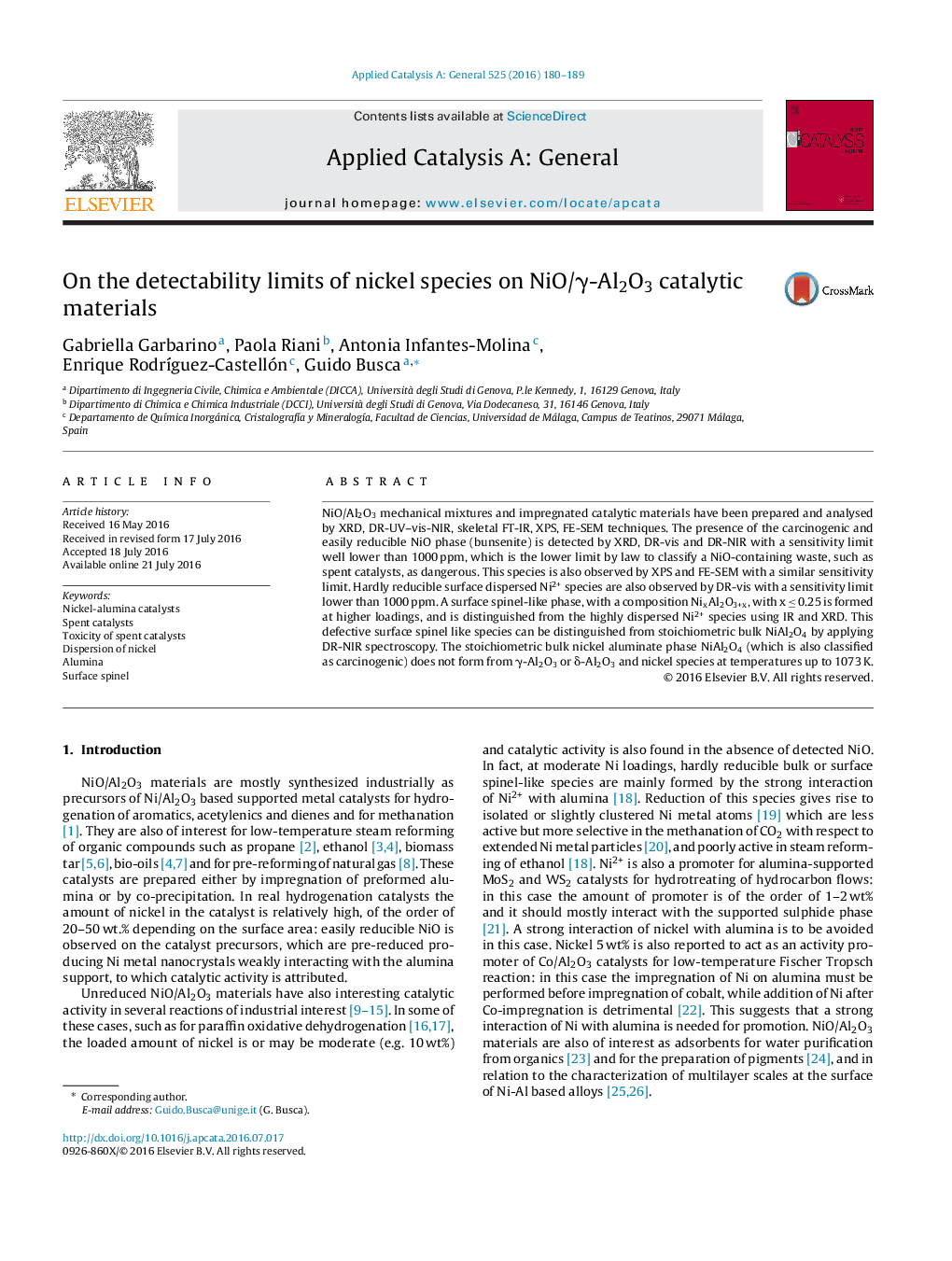| کد مقاله | کد نشریه | سال انتشار | مقاله انگلیسی | نسخه تمام متن |
|---|---|---|---|---|
| 38688 | 45787 | 2016 | 10 صفحه PDF | دانلود رایگان |
• NiO/Al2O3 mechanical mixtures and impregnated samples were prepared and analysed.
• By increasing Ni loading: dispersed Ni2+, surface spinel, 2 types of NiO were noticeable.
• Carcinogenic and easily reducible NiO is detected with a sensitivity limit <1000 ppm.
• Also the surface spinel NixAl2O3+x (x ≤ 0.25) is detected with sensitivity <1000 ppm.
• Carcinogenic NiAl2O4 does not form at temperatures up to 1073 K.
NiO/Al2O3 mechanical mixtures and impregnated catalytic materials have been prepared and analysed by XRD, DR-UV–vis-NIR, skeletal FT-IR, XPS, FE-SEM techniques. The presence of the carcinogenic and easily reducible NiO phase (bunsenite) is detected by XRD, DR-vis and DR-NIR with a sensitivity limit well lower than 1000 ppm, which is the lower limit by law to classify a NiO-containing waste, such as spent catalysts, as dangerous. This species is also observed by XPS and FE-SEM with a similar sensitivity limit. Hardly reducible surface dispersed Ni2+ species are also observed by DR-vis with a sensitivity limit lower than 1000 ppm. A surface spinel-like phase, with a composition NixAl2O3+x, with x ≤ 0.25 is formed at higher loadings, and is distinguished from the highly dispersed Ni2+ species using IR and XRD. This defective surface spinel like species can be distinguished from stoichiometric bulk NiAl2O4 by applying DR-NIR spectroscopy. The stoichiometric bulk nickel aluminate phase NiAl2O4 (which is also classified as carcinogenic) does not form from γ-Al2O3 or δ-Al2O3 and nickel species at temperatures up to 1073 K.
Figure optionsDownload high-quality image (78 K)Download as PowerPoint slide
Journal: Applied Catalysis A: General - Volume 525, 5 September 2016, Pages 180–189
